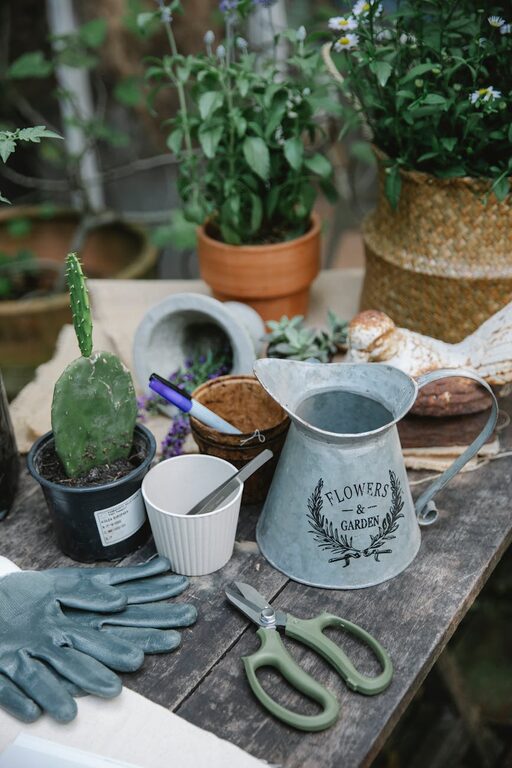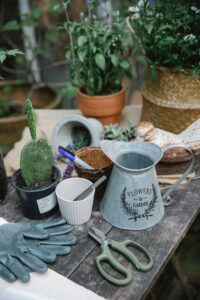
Starting an indoor herb garden is a rewarding and practical way to enjoy fresh herbs year-round. Whether you have limited outdoor space or want convenient access to fresh flavors while cooking, growing herbs indoors can be simple and fun. This guide will walk you through the key steps and tips to create a thriving small herb garden inside your home.
Why Grow Herbs Indoors?
Indoor herb gardens bring many benefits:
– Fresh herbs at your fingertips, enhancing your meals
– Decorative greenery that improves indoor air quality
– Year-round growing regardless of outdoor weather
– Educational and relaxing gardening experience
Common herbs like basil, mint, parsley, and rosemary can thrive indoors with the right care. Plus, growing your own herbs can be more cost-effective than buying fresh ones regularly.
Choosing the Right Location
One of the most important factors for success is selecting a spot with enough light. Most herbs need 6-8 hours of sunlight daily. Here are some tips for choosing a location:
– A south-facing window usually provides the best natural light.
– If natural light is limited, consider supplementing with a grow light.
– Avoid spots near heating vents, air conditioners, or drafty windows.
– Ensure you have easy access for watering and harvesting.
Selecting Herbs for Your Indoor Garden
Start with herbs that are known to grow well indoors. Some beginner-friendly herbs include:
– Basil: Needs lots of light and warmth.
– Mint: Tolerates lower light but can spread aggressively.
– Parsley: Prefers moderate sunlight and moist soil.
– Chives: Easy to grow with bright, indirect light.
– Thyme: Requires bright light and well-drained soil.
– Rosemary: Likes bright light and dry conditions.
Consider what herbs you use most often in cooking and your kitchen’s light conditions.
Choosing Containers and Soil
Herbs grow well in containers that provide good drainage to prevent root rot. Here’s what to consider:
– Choose pots with drainage holes.
– Use a lightweight potting mix formulated for herbs or vegetables—avoid garden soil.
– Self-watering containers can help maintain consistent moisture.
– Small to medium-sized pots (4-6 inches) are usually sufficient for most herbs.
If you want a neat look, consider matching containers or a specialized indoor gardening kit.
Planting Your Herbs
You can start herbs from seeds or buy young plants:
– Starting from seeds: Follow the packet instructions for depth and spacing. Seed starting indoors requires patience but can be cost-effective.
– Using seedlings or small plants: This is faster and often easier, especially for beginners.
Steps for planting:
- Fill your container with potting mix, leaving about an inch from the top.
- Water the soil lightly before planting.
- Place seeds or seedlings according to the recommended spacing.
- Gently press the soil around seedlings to secure them.
Caring for Your Indoor Herb Garden
Proper care ensures your herbs stay healthy and productive.
Watering
– Most herbs like the soil to be moist but not soggy.
– Water when the top inch of soil feels dry.
– Use room temperature water.
– Avoid letting water sit in the saucer to prevent root rot.
Lighting
– Place your garden where herbs receive the best light possible.
– Rotate pots occasionally for even growth.
– Use a grow light if natural light is insufficient—keep it on for 12-16 hours daily.
Temperature and Humidity
– Most herbs prefer temperatures between 65-75°F (18-24°C).
– Avoid cold drafts and sudden temperature changes.
– Herbs appreciate a bit of humidity—consider misting or placing a tray of water nearby.
Fertilizing
– Use a balanced, water-soluble fertilizer once a month during the growing season.
– Avoid over-fertilizing, which can affect flavor and growth.
Pruning and Harvesting
– Regular harvesting encourages bushier growth.
– Pinch off flower buds to keep herbs focused on leaf production.
– Harvest in the morning after dew has dried for best flavor.
– Use sharp scissors or pruning shears to avoid damaging plants.
Troubleshooting Common Issues
– Yellow leaves: Often a sign of overwatering or poor drainage.
– Leggy growth: Indicates lack of light; move plants to a brighter spot.
– Pests: Indoor herbs can attract aphids, spider mites, or whiteflies. Wipe leaves or use natural pest control like neem oil if needed.
– Wilting: Usually due to underwatering or heat stress.
Additional Tips for Success
– Group herbs with similar watering and light needs together.
– Label your herbs to keep track of varieties.
– Rotate different herbs seasonally to match their growth patterns.
– Consider companion planting for healthier plants.
Conclusion
Growing a small herb garden indoors is a great way to bring fresh flavors, greenery, and a bit of nature into your home. With the right location, containers, and care, even beginners can enjoy a thriving herb garden all year. Start small, have patience, and enjoy the rewards of your homegrown herbs.
Happy gardening!






